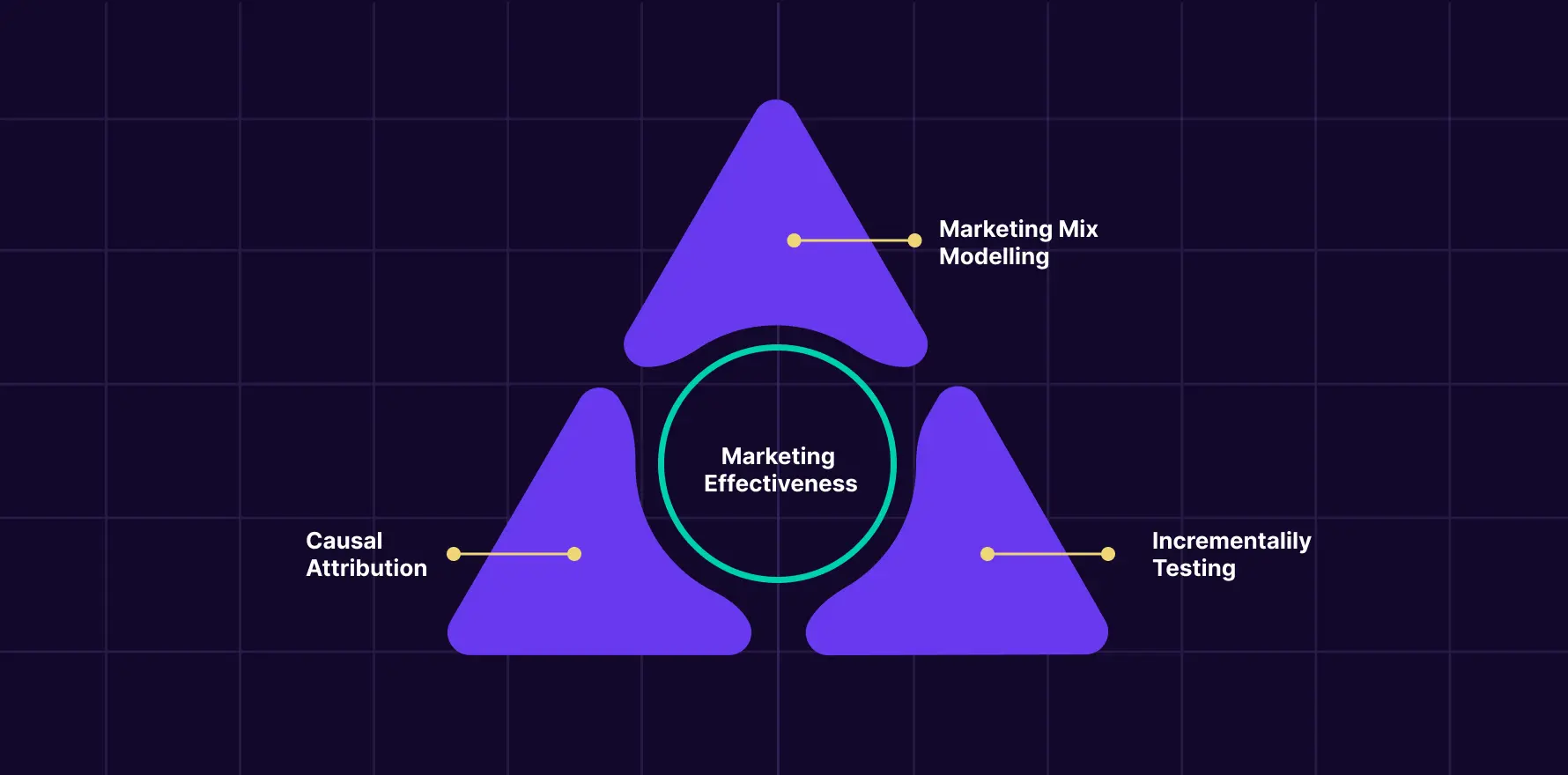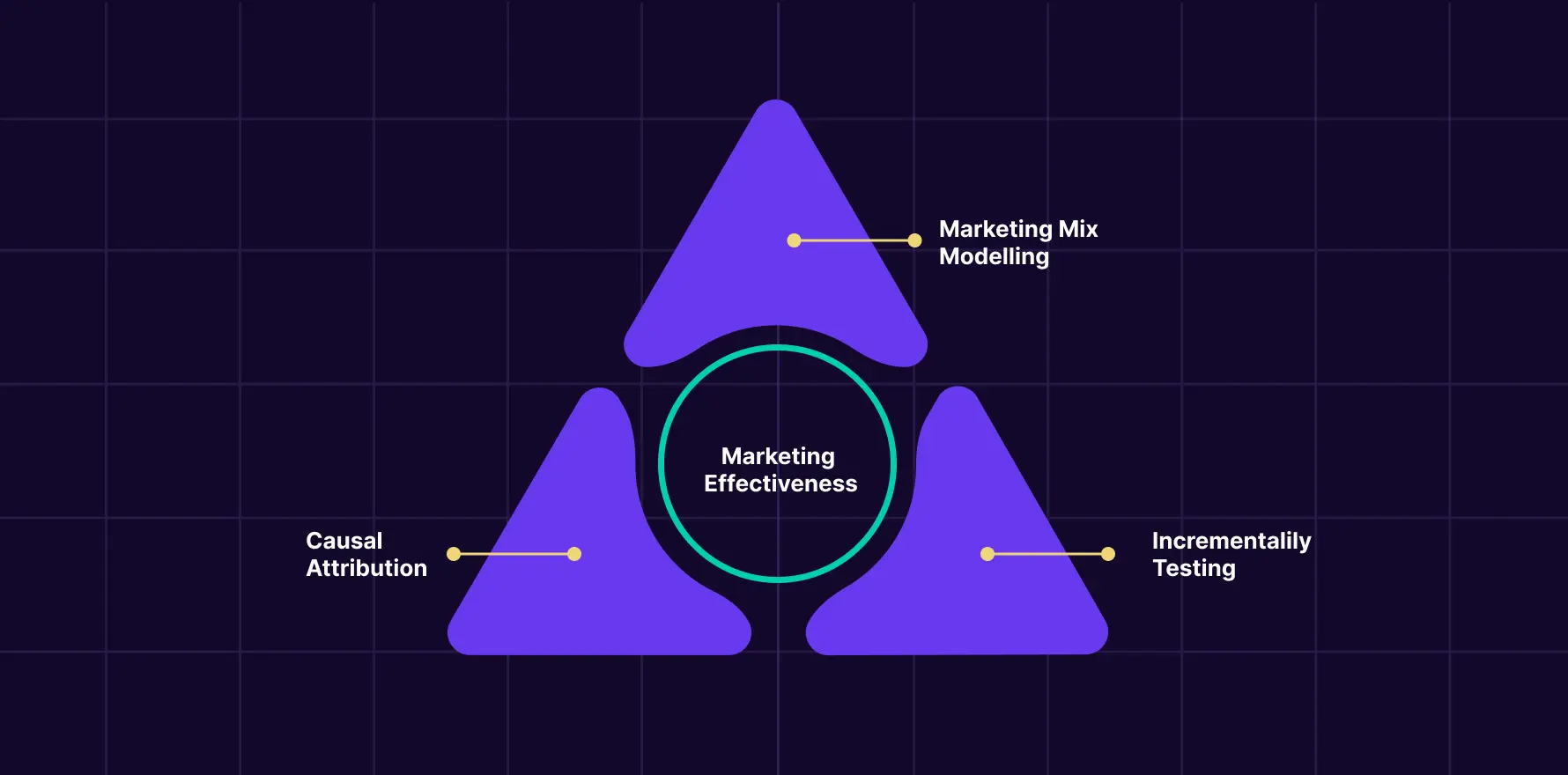Accurate marketing measurement can significantly boost growth by enabling businesses to understand and enhance the effectiveness of their marketing investments.
In fact, 83% of CEOs agree that measurement is crucial for driving growth. However, there’s a disconnect as 45% of CFOs admit to having either rejected or not fully funded marketing proposals because they lacked a clear demonstration of value.
This gap highlights the need for a shift in mindset within organizations. To leverage marketing effectiveness as a growth driver, marketing efforts must clearly and convincingly demonstrate their impact on business value. It’s essential to present marketing effectiveness in a way that is transparent and trustworthy across the entire organization.
This guide aims to equip ecommerce marketers with the knowledge and tools to measure their marketing effectiveness accurately. But before we jump into the methodologies, let’s understand the basics of marketing effectiveness.
What is Marketing Effectiveness?
Marketing effectiveness is a measure of how well your marketing strategies achieve your business goals. In the ecommerce sector, this involves analyzing the impact of various marketing activities on sales, customer acquisition, retention, and overall business growth.
The goal is to identify which strategies are working, which need adjustment, and which should be discontinued.
Why is It Crucial for Ecommerce Success?
Precise measurement of marketing effectiveness helps businesses determine whether their marketing activities are genuinely driving additional sales or merely capturing existing demand.
1) Understand the true impact of marketing: It provides a clear distinction between incremental and non-incremental sales. For instance, if a customer was already planning to purchase a product and then clicks on an ad before buying, that sale is non-incremental.
2) Make better marketing decisions: By understanding the incremental contribution of each marketing channel, businesses can make data-driven decisions regarding where to invest additional budget, how much to scale a channel before it reaches saturation, and how to adjust budgets if market conditions change. This leads to more efficient and effective marketing strategies, ultimately boosting profitability.
3) Drive predictable business growth: Effective measurement also answers critical questions like how much budget is needed to achieve specific goals, what the probability of hitting those goals is, and how much brand value is being contributed by marketing efforts. This allows businesses to plan more strategically, ensuring that solid data back their growth initiatives.
How to Measure Marketing Effectiveness in Ecommerce?
Traditional single-method approaches often fail to capture the full picture, leading to incomplete insights and missed opportunities. Adopting a triangulated approach is essential to truly understanding the impact of your marketing efforts.
Commonly, this approach integrates marketing mix modeling, incrementality testing, and multi-touch attribution to view marketing performance comprehensively.
measure-ecommerce-marketing-effectiveness
1) Start with Marketing Mix Modeling (MMM)
Marketing mix modeling is a statistical technique that evaluates the effect of various marketing channels on a specific outcome, such as sales or conversions. By analyzing historical data, MMM builds a model that quantifies the relationship between media inputs (like advertising spend) and the desired business outcome.
Unlike methods that focus on individual user journeys, MMM relies on aggregate data, offering holistic insights into how different channels influence the target variable overall.
When constructed and fine-tuned effectively, MMM can also capture important dynamics such as halo effects, synergies, and cannibalization:
- Halo effect: This occurs when an advertising effort in one channel positively influences conversions in another channel. For example, increased ad spend on Facebook might boost product sales on Amazon.
- Synergies: These represent the combined impact of multiple marketing channels working together, where the outcome is greater than the sum of individual channel contributions.
- Cannibalization: This happens when the growth in conversions from one channel leads to a decline in conversions from another channel.
Understanding these effects is essential for optimizing marketing strategies across different products and brands, ensuring that resources are used efficiently to drive the best possible outcomes.
How to Use MMM in Ecommerce?
- Data collection: Gather historical data from all marketing channels, including online and offline activities.
- Model development: Develop an MMM model that incorporates Adstock to account for the lasting impact of ads and Saturation effects to avoid overspending on diminishing returns.
- Insight generation: Use the model to identify which channels are driving the most value, how they interact, and when they reach saturation. This will help optimize budget allocation and refine your overall marketing strategy.
Learn how Lifesight’s MMM enabled an ecommerce brand to refine its budget allocation effectively.
2) Measure and Validate With Incrementality Testing
While MMM provides a broad understanding of channel effectiveness, incrementality testing validates the true impact of your marketing activities. This involves setting up control and test groups to isolate the incremental lift generated by your marketing efforts. It ensures that the contributions of different channels are accurately reflected and not inflated by external factors.
How to use incrementality testing in ecommerce?
- Design geo-experiments: Implement geo-experiments by choosing a particular geographic area or market where you plan to alter your advertising strategy in some way. This might involve increasing or decreasing your ad spend in that area, targeting a different audience, or even halting your advertising altogether.
- Analyze results: Compare the performance of test and control groups to measure the actual lift in sales or conversions attributed to marketing efforts.
- Optimize strategies: Use the insights from IT to refine your marketing strategies, ensuring that resources are focused on activities that generate real value.
Delve into this compelling case study to discover how a rapidly ascending ecommerce brand turned to Incrementality Testing as its compass in the dense forest of digital marketing.
3) Make Daily Optimization Decisions With Causal Attribution
In-platform reports and insights are not grounded in incrementality and are derived using correlation not causation.
Causal attribution enhances this by adjusting your platform data using insights from experiments or MMM. This allows you to optimize your campaigns using granular incrementality insights that will drive incremental results.
At Lifesight, we automatically calibrate your attribution data using our powerful unified measurement framework that seamlessly leverages MMM and incrementality testing insights.
(For more details on how we calculate the incrementality factor, check out our blog post “Steps to Measure Marketing ROI.”)
MMM vs Incrementality Testing vs MTA vs Causal attribution
To effectively measure marketing effectiveness in ecommerce, it’s essential to understand the strengths and limitations of different measurement techniques. Each of these approaches serves a unique purpose and excels in different aspects of marketing analysis. Here’s a comparative overview:
| Criteria | MMM | Incrementality testing | MTA | Causal attribution |
|---|---|---|---|---|
| Measures incrementality | yes | yes | no | yes |
| Measures a baseline | yes | yes | no | no |
| Measures adstock and saturation | yes | no | no | no |
| Factor considered | Holistic approach, considering multiple channels and external factors. | Single channel focus, usually isolated experiments. | Fractional attribution based on user-level data. | Platform reported Calibration |
| Scientific accuracy | yes | yes | no | no |
| Privacy-Proof | yes | yes | no | yes |
| Relies on Cookies | no | no | yes | no |
| User-Level insights | no | no | yes | no |
| Measures offline channels | yes | yes | no | no |
| Measures non-click channels | yes | yes | no | no |
Final thoughts
Measuring marketing effectiveness in ecommerce is no longer just a “nice to have” – it’s a critical component of driving sustainable growth and maximizing ROI. By adopting a triangulated approach that integrates MMM, incrementality testing, and causal attribution, businesses can comprehensively understand their marketing performance. Marketing measurement solution by Lifesight supports measuring marketing performance.
This approach helps optimize current campaigns and informs strategic planning for the future, ensuring that every marketing dollar is spent wisely.
Ready to take your marketing measurement to the next level?
Book a demo with Lifesight today and discover how we can help you drive better results for your ecommerce business.
You may also like
Essential resources for your success


























































